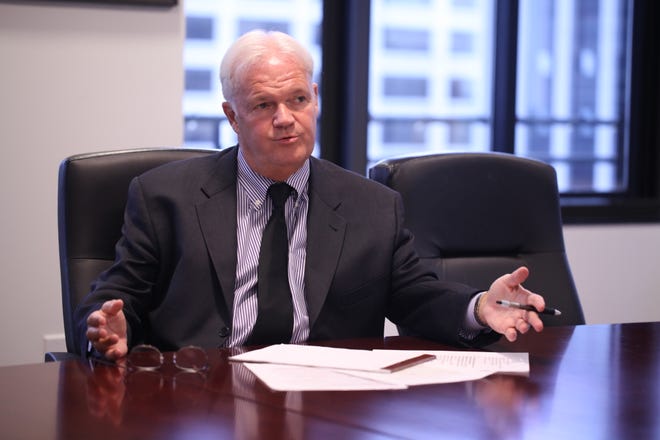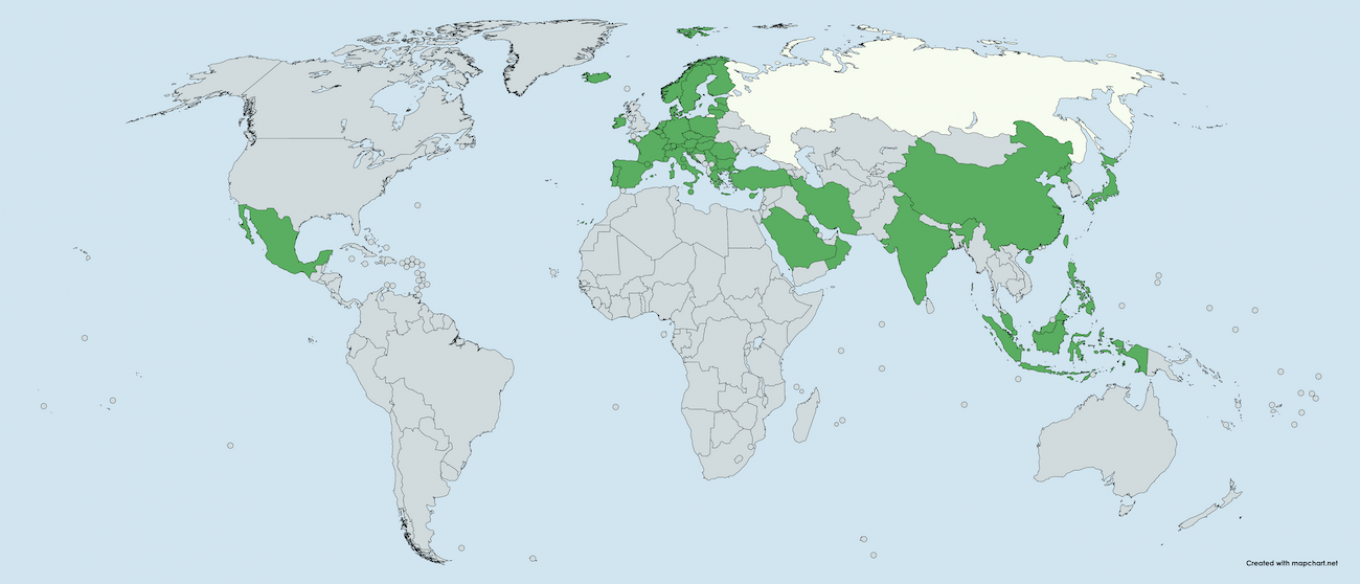A Look At Ongoing Nuclear Litigation: A Comprehensive Overview

Table of Contents
Nuclear litigation encompasses a broad range of legal actions stemming from various aspects of nuclear activities. These include lawsuits arising from accidents at nuclear power plants, disputes over the disposal of radioactive waste, and legal challenges related to the legacy of nuclear weapons testing. These cases span the globe, involving governments, multinational corporations, and individuals directly affected by nuclear activities. This article aims to provide a comprehensive overview of significant ongoing nuclear litigation, shedding light on its diverse facets and implications.
Types of Nuclear Litigation Cases
Nuclear litigation cases are diverse, reflecting the multifaceted risks associated with nuclear technologies. Three key categories dominate the landscape: accidents, waste disposal, and weapons testing.
Nuclear Accidents and Their Legal Ramifications
Major nuclear accidents, such as Chernobyl in 1986 and Fukushima in 2011, have resulted in extensive and protracted legal battles. These nuclear accident litigation cases often grapple with the immense challenges of proving causation between radiation exposure and subsequent health problems. Determining liability becomes even more complex when multiple parties are involved, necessitating a careful analysis of operational failures, design flaws, and regulatory oversight.
- Chernobyl lawsuits: Numerous lawsuits have been filed against the Soviet government and related entities for the Chernobyl disaster, focusing on compensation for health issues and environmental damage.
- Fukushima compensation claims: Similarly, the Fukushima Daiichi nuclear disaster triggered a wave of compensation claims against the Tokyo Electric Power Company (TEPCO) and the Japanese government.
- Radiation exposure lawsuits: Ongoing litigation frequently involves individuals claiming health problems resulting from radiation exposure near nuclear facilities, demanding compensation for medical expenses and lost income.
Nuclear Waste Disposal and Environmental Liability
The safe and permanent disposal of nuclear waste remains a significant challenge, leading to substantial nuclear waste litigation. Cases often revolve around the contamination of land and water resources near storage sites or processing facilities. These environmental contamination lawsuits highlight the difficulties in enforcing stringent environmental regulations within the nuclear industry and the long-term consequences of inadequate waste management practices.
- Radioactive waste disposal lawsuits: Lawsuits often focus on the failure to meet regulatory standards in the handling and storage of radioactive materials, leading to environmental contamination and potential health risks.
- Groundwater contamination cases: Several cases involve the contamination of groundwater resources near nuclear facilities, resulting in significant legal challenges in terms of remediation and compensation.
Nuclear Weapons Testing and its Consequences
The legacy of atmospheric nuclear weapons testing continues to fuel nuclear weapons testing litigation. Individuals who lived downwind from test sites ("downwinders") have filed numerous lawsuits against governments, claiming health problems stemming from radiation exposure. These downwinders lawsuits represent significant challenges in establishing causal links between historical events and long-latency health effects. Moreover, obtaining sufficient evidence across decades-long periods adds to the complexity of such radiation exposure compensation claims.
Key Players in Nuclear Litigation
Nuclear litigation involves a complex interplay of various actors, each with specific interests and responsibilities.
Governments and Regulatory Bodies
Governments play a pivotal role in regulating the nuclear industry and frequently become parties in litigation. Their involvement extends to establishing safety standards, overseeing operations, and managing the fallout from accidents or other incidents. Government regulation litigation can focus on failures to enforce regulations or inadequate oversight leading to incidents that require litigation.
Nuclear Power Companies and Their Insurance Providers
Nuclear power companies bear significant liability for accidents and environmental damage. Their insurance providers play a crucial role in covering damages and defending against lawsuits. Nuclear industry liability is frequently a central theme, with litigation focusing on issues of corporate negligence and responsibility. Nuclear insurance claims are often large and complex, adding further complexity to the legal processes involved.
Individuals and Communities Affected by Nuclear Activities
Individuals and communities directly impacted by nuclear activities have the right to seek legal recourse for damages suffered. Their claims often involve demonstrating a direct causal link between nuclear operations and their health problems or property damage. Ensuring their access to justice is vital in achieving accountability and fairness.
Challenges in Nuclear Litigation
Nuclear litigation presents unique challenges that complicate the legal process.
Scientific and Technical Evidence
Presenting and interpreting complex scientific and technical evidence in court is a significant hurdle. Radiation exposure evidence often involves sophisticated analysis of isotopes and radiation levels, requiring expert testimony and careful consideration of methodologies.
Long Latency Periods
The effects of radiation exposure can manifest years or even decades after initial exposure. This latency period complicates establishing causality between exposure and health problems, requiring careful epidemiological studies and expert medical testimony.
Jurisdictional Issues
Cases involving multiple countries or jurisdictions present jurisdictional complexities, requiring international cooperation and harmonization of legal frameworks. International nuclear litigation often involves navigating different legal systems and resolving conflicts of law.
Conclusion: Understanding the Landscape of Ongoing Nuclear Litigation
This overview highlights the diverse nature of ongoing nuclear litigation, encompassing accidents, waste disposal, and weapons testing. The cases discussed underscore the significant challenges in proving causation, establishing liability, and navigating complex scientific evidence. The ongoing evolution of nuclear litigation is vital for promoting environmental protection, safeguarding public health, and ensuring corporate accountability within the nuclear industry. Stay updated on the latest in nuclear litigation to remain informed about these crucial developments and the importance of legal accountability in the nuclear sector. Learn more about nuclear litigation and follow ongoing nuclear litigation developments to better understand this complex and important field.

Featured Posts
-
 Chainalysis And Alterya A Powerful Combination In The Blockchain Space
May 01, 2025
Chainalysis And Alterya A Powerful Combination In The Blockchain Space
May 01, 2025 -
 Ryan Coogler Un Reboot De X Files
May 01, 2025
Ryan Coogler Un Reboot De X Files
May 01, 2025 -
 Louisville Congressman Alleges Usps Lack Of Transparency On Mail Delays
May 01, 2025
Louisville Congressman Alleges Usps Lack Of Transparency On Mail Delays
May 01, 2025 -
 Vilniaus Savo Vardo Turnyras Mato Buzelio Reakcija Ir Tyla
May 01, 2025
Vilniaus Savo Vardo Turnyras Mato Buzelio Reakcija Ir Tyla
May 01, 2025 -
 Warmer Temperatures A Potential Boost For Russias Spring Offensive
May 01, 2025
Warmer Temperatures A Potential Boost For Russias Spring Offensive
May 01, 2025
